Geoff Groberg
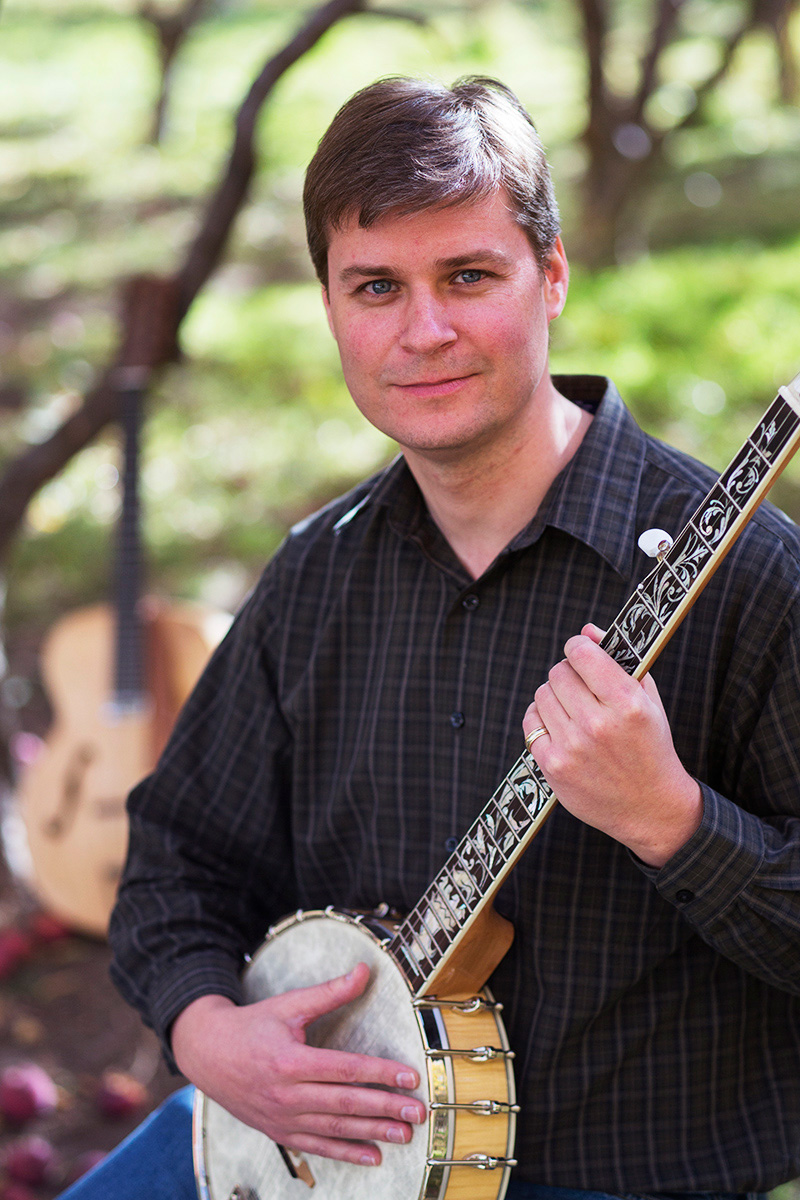
How did you get into playing music?
My parents used to make me sing in church. I hated it. I cried. It’s a miracle that I’m still interested in music. That was when I was young—four or five years old.
When I was eight I started on piano. My older sister had a natural gift for the piano and she was my first teacher. I had a few lessons from her and then my mom asked around (she really asked around) and found an amazing piano teacher. There were lots of teachers who lived closer, but my mom went through the extra trouble of driving me to weekly lessons that were probably forty minutes away. Or maybe that was a part of her day when she experienced some peace? Anyway, my first private music teacher was extraordinary. That lasted for about seven years. Every teacher since then had the unfortunate lot of being compared with her. So no one else lasted very long.

What instruments do you play?
Piano is the only instrument I took lessons on. But I also play bass, banjo, and guitar. Also in middle school I played trombone. And there are other things I dabble in—mostly folk instruments like Irish whistles and percussion odds and ends.
It’s funny, but in some ways I’m the least confident on piano even though it’s the only instrument I took lessons on. I think part of that might have to do with the style of music I associate with piano versus what I play on other instruments. Most of what I play these days is folk music of one kind or another. Even on piano, I mostly play folk music, but I’m more aware of the classical music tradition. People have taken it to such extreme levels of virtuosity. It’s wonderful, but it’s daunting.
That’s not to say that folk music is always easy or without virtuosity, but it is a completely different approach. For me, it’s more intuitive and frankly more human. It comes more naturally to me. After all the years of piano lessons, I never really learned how to sight-read, which is almost essential for what people expect from a piano player. I’m more comfortable playing by ear. And in the folk music traditions that’s what you do. Usually there’s no sheet music. It’s all passed from person to person. It’s just a friend sitting down and playing a tune. You listen and figure it out and maybe add some variations of your own. I love it. Also, when people see you as a banjo player they don’t make you play in church. (Actually, I’m realizing that’s not true. Dang it.)
How did you get started with making your own instruments?
I think it started out of curiosity. The first instruments I can remember making were what I called electric jaw harps. On TV I had seen a bowed piece of wood with a wire. Someone was holding it in their mouth and plucking it and it made interesting sounds as they changed the shape of their mouth. A few things came together in my mind: magnets, electricity, eighth-grade science class, and rock and roll. I thought, “I’m gonna make some electric jaw harps and they’re going to be awesome.” And they were. A friend and I built a fire in our backyard and melted some PVC pipe into shape. We strung them up, installed our homemade pickups, and painted them black with airbrushed lightning streaks. Then we played them through an old reel-to-reel which I had rigged into a tape delay feedback loop. I still can’t understand why we didn’t become instant rock stars.
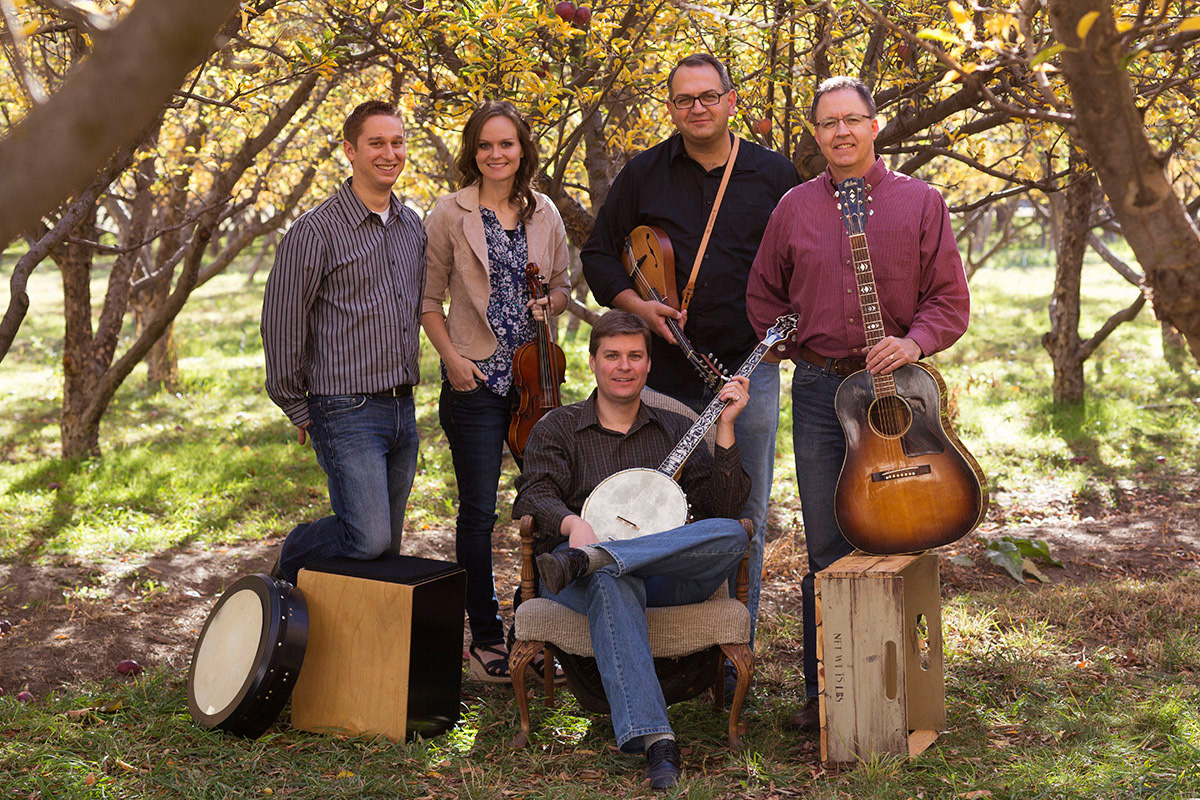
How does the gospel affect your music?
Well, I feel that gospel ideas are expressed really well with lightning electric jaw harps. Just kidding. Let me talk a little more about instrument-making and folk music, and then I’ll bring it back around to the gospel.
Musical instruments are a kind of technology. They are machines. Think about the levers in a piano, or the precision frets and tension on a guitar. But instruments are often seen as mystical, magical objects. What causes them to create the tones that move us, even spiritually move us? Actually, it’s the musicians that do that part. But these machines, these instruments, have a level of mysticism in a lot of people’s minds.
When you make an instrument or repair or modify one, you start to see musical instruments differently. You feel more inclined to experiment, to see what kinds of new tones and textures can be created not just by how you play the instrument, but by the instrument itself. For me, it has enriched my music and changed how I approach it. Here’s an example:
When I recorded “Come, Ye Disconsolate,” there was a texture I had in mind for the background chords. I experimented with some digital synthesis techniques, but it wasn’t working for me, so I decided to try bowing some banjos with a violin bow (listen around 1:00). Actually, one of the banjos was an instrument I made. It had a wooden top and a very distinctive sound. If I hadn’t built that instrument and experimented with it, I probably would not have been aware of certain acoustic possibilities.
There’s also a kind of joy in making an instrument and then making music with that instrument. Your art is more personal. Actually, there are lots of joys involved: doing something constructive, working with your hands, learning new things.
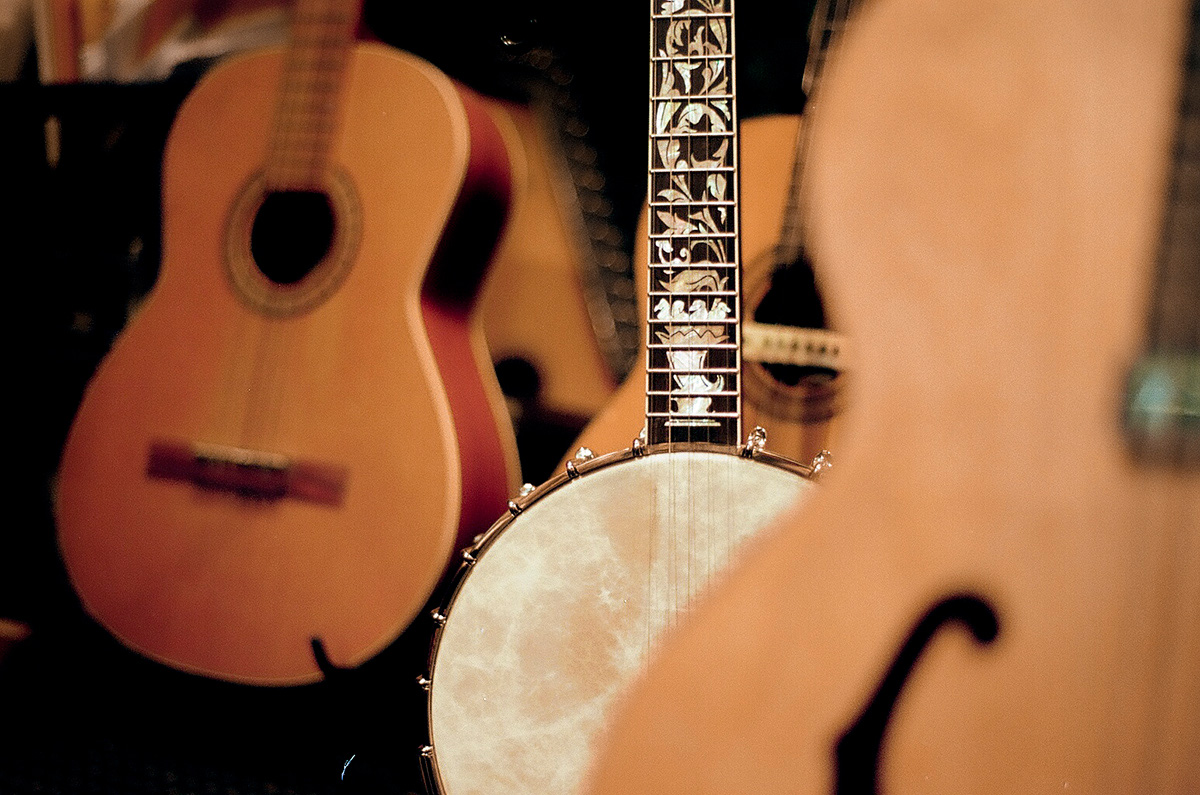
Speaking of joy, I need to explain how the gospel affects my music. There are a lot of ways. Since we’re talking about building, repairing, and modifying instruments I’ll mention a thought I had recently: I came across a superb banjo for sale. I love banjos, but they are expensive. And this one was stunning. The entire fingerboard was inlaid with mother of pearl. It was constructed with the finest materials—beautiful flamed maple and ebony. There was just one problem: the neck was broken in half, which made it pretty useless. But actually that was a blessing, because it meant I could afford it.
While I was working to restore it, I thought about a story from the Old Testament. Jeremiah was inspired to visit a potter. He saw the potter spinning clay into a vessel, but the scripture tells us that the vessel was “marred.” I take it to mean that it was more or less ruined, like the banjo that was broken in half. But when Jeremiah saw this, the voice of the Lord whispered and he watched as the potter started over, re-using the clay from the marred vessel to create something new and perfect. That was how the Lord taught Jeremiah that even though we might be broken, he can make us whole again. I was thinking about all of this when I repaired the banjo. It felt great to help the banjo come alive with music again. It was also a reminder of how the Lord has helped and healed me in my own life.
Music, and especially sacred music, has healing power. There’s a line in “Come, Ye Disconsolate” that is especially beautiful and moving. Even though we didn’t record the lyrics, I couldn’t stop thinking about them while I was arranging it: “Earth has no sorrow that Heaven cannot heal.” That moves me. It reminds me of sorrows I’ve experienced, but it also offers hope. It’s a kind of healing.
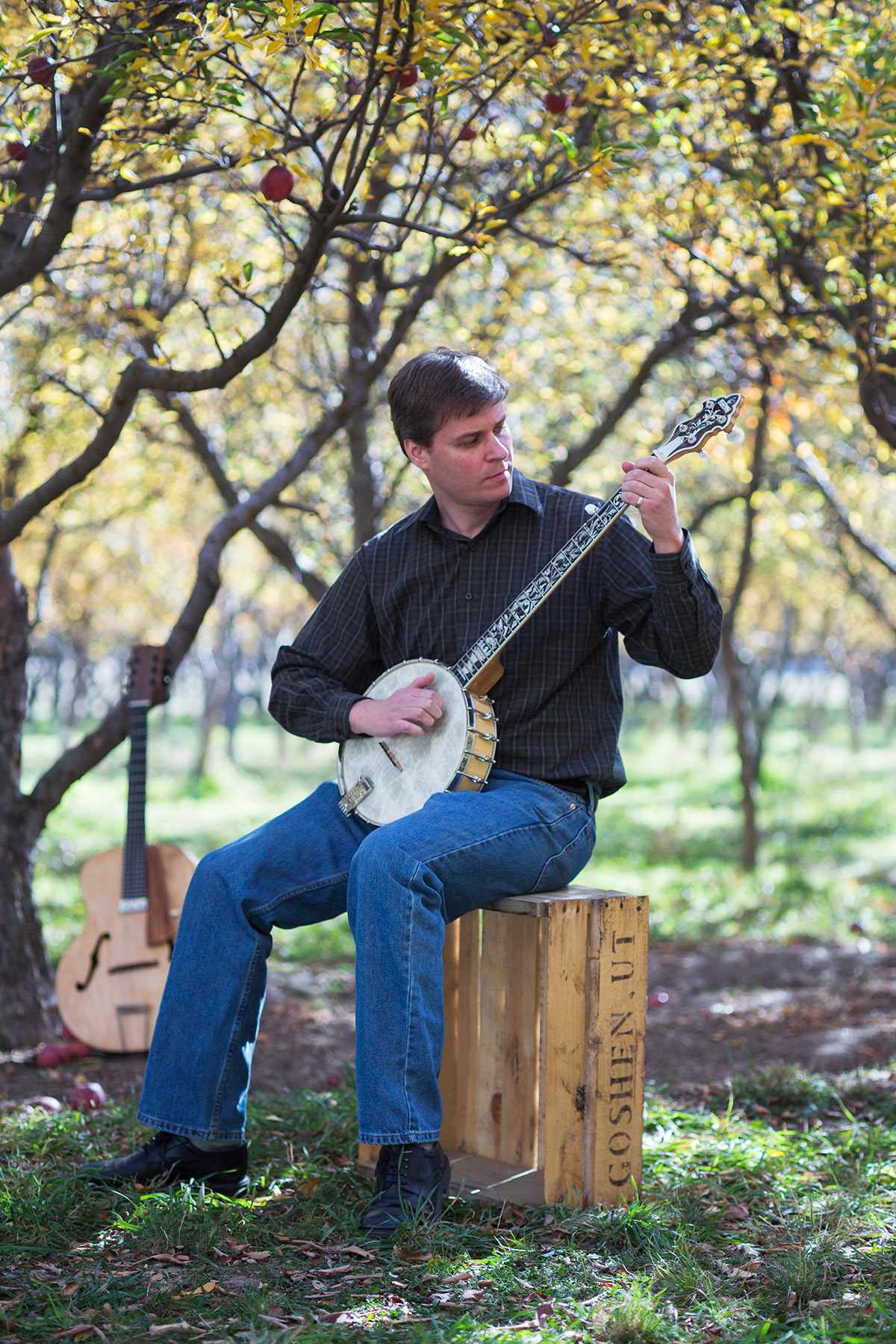
Of course, to everything there is a season, and I feel that without some of the attitudes and perspectives that come with the gospel, I wouldn’t have discovered the lighter side of bluegrass and folk music. There are a lot of interesting connections between the gospel and folk music. They are rooted in tradition. They encourage us to think about our past, our heritage, and our ancestors. And in Mormondom, we have this amazing folk music tradition that’s very much alive: every Sunday we sing nineteenth-century hymns together. And on Tuesdays at 11 a.m. it also happens in the Marriott Center. Strange but true.
The gospel actually played a direct role in my discovery of folk music because it happened on my mission in England. I was exposed to the amazing traditional folk music of the British Isles. I still love it. It’s the roots of a lot of American folk music. At BYU, I also became involved with the Folk Music Ensemble. Mark Geslison, its director, became my long-time friend and collaborator. We formed a duo and have recorded a plethora of music. The American and British folk music traditions play a huge part in our hymn arrangements:
Talk us through the process of restoring that banjo.
The banjo was a relatively easy fix. The hardest thing about it was risking the purchase of a broken instrument, in case I couldn’t fix it. The break had a bit of a wave to it (the wood grain in curly maple does that) which made it fit together almost like a jigsaw puzzle. That actually made for a good glue joint. I decided to leave a visible line where it was broken. It’s just cosmetic, and I could probably hide it, but I kind of like being reminded that it used to be broken.
When you arrange a hymn—like that rendition of “Redeemer of Israel”—how do you go about it?
I usually start by thinking about the melody. I think about what I can do with it, or around it, that is different from the way it is normally heard. With “Redeemer of Israel/I Saw a Mighty Angel Fly,” I was definitely thinking about traditional Irish music. I even had a little ditty in mind to use as an interlude between verses.
Every once in a while it’s fun to find a tune that I’m not particularly fond of and try to change how it feels. Here’s an example:
When it comes to arranging, I’m thinking about things like altering the timing, the overall mood, the chord progression, sometimes even altering the melody a little. It’s actually a blurry line between composing and arranging. I’m also thinking about instrumentation. But mostly, I have a general feeling in mind, and the chords and other choices flow from that. I’m not always thinking about whether it would be easy to perform live because I’m thinking in terms of studio recording, which really has a different set of possibilities. But sometimes I’m also trying to make sure it can be performed live.
I usually don’t notate things out in sheet music. Sometimes I write up a chord chart, and maybe some thoughts about the arrangement. Sometimes, after I’m completely finished arranging and recording, I’ll go back and create sheet music if I think it’s something people might want (for example, a piano solo that could be performed in church).
What is your favorite hymn? Why?
All of the Easter hymns are beautiful. I really love “Christ the Lord Is Risen Today.” It goes right to the center of all faith. For me, it’s the story of the people who knew the Savior while he lived and were astonished to see him alive again after his death and burial. It’s the great miracle, the good news. The hymn has the feeling of waking up to a beautiful new morning. All things have become new.
What instruments have you made lately?
The most recently finished project is my archtop guitar. I found an old 1954 Harmony archtop guitar in the classifieds that was in very poor condition. I restored it but also changed it. One of the fun things about a project like this is creating something new from something old. My new guitar is a cross between a banjo and a guitar. Plus, it looks cool.
What are you currently working on?
I’m in the final stages of repairing a 36-string harp for my daughter. It had a broken neck. It wasn’t a clean break and it has been a more complicated fix, but hopefully it will be worth it. When you have an instrument with thirty-six strings, the pulling force—the strain on the structure of the instrument—is tremendous. It’s around 900 pounds of pressure in this case. Let’s hope the repair holds. I love hearing my daughter practice the harp in the morning. I wake up to beautiful, angelic tones. It helps me to not be so grouchy.
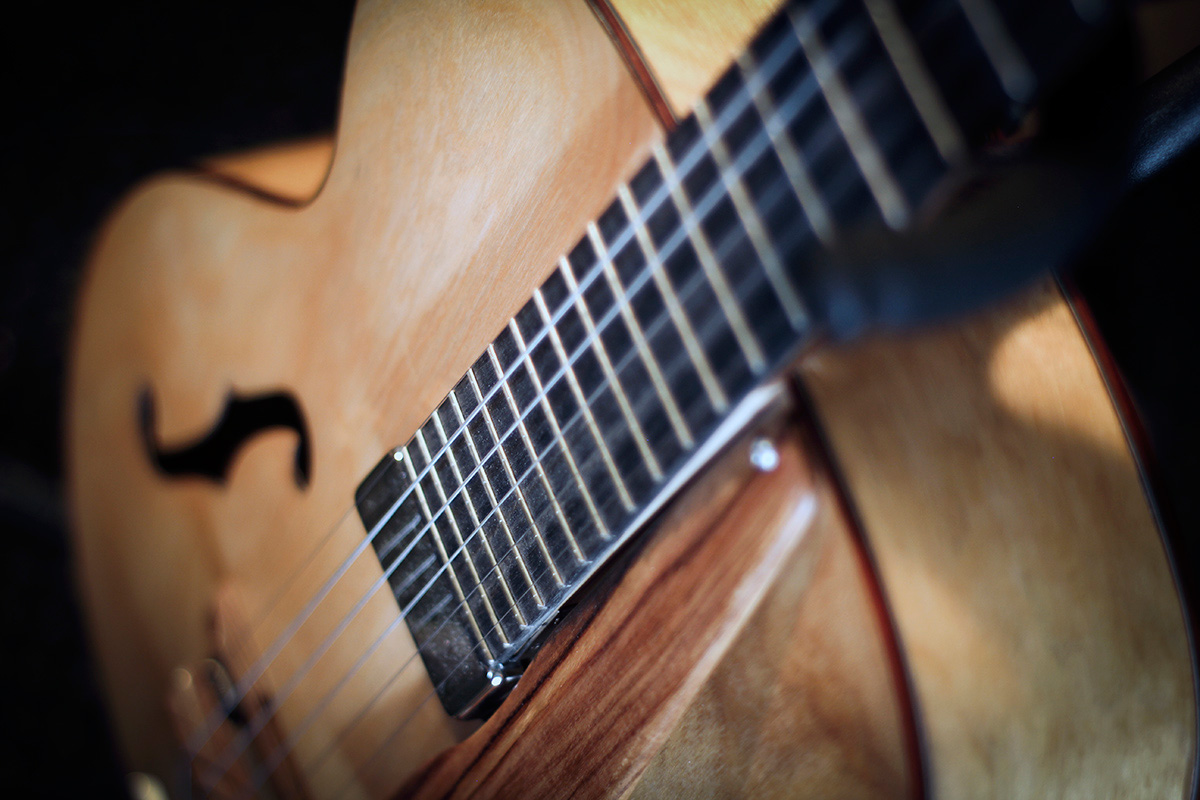
What projects do you have coming up?
Mark and I are planning on recording another hymns CD for the spring. I’m also excited about building a fretless gourd banjo. It’s an instrument that is the predecessor to the modern five-string banjo. Along with that, I want to make some recordings that are not religious, just beautiful music in the folk tradition.
Where do you see your music ten years from now?
I am 99% certain that I will be extremely famous and obscenely wealthy because of my music. But there is a slight chance that I’ll just continue to play gigs at county fairs and weddings. I’m okay with that because I really enjoy Navajo tacos. ❧
